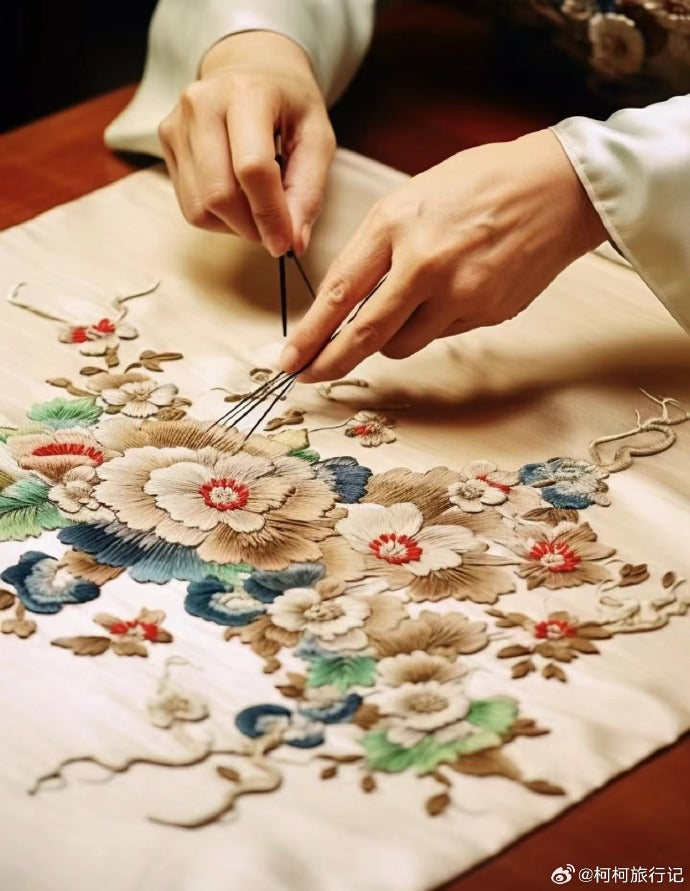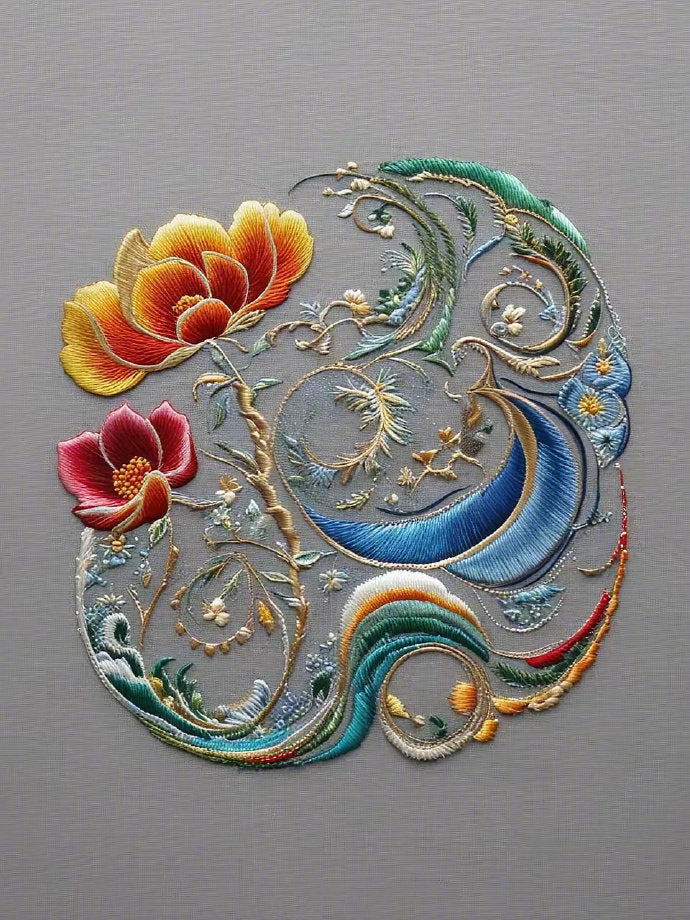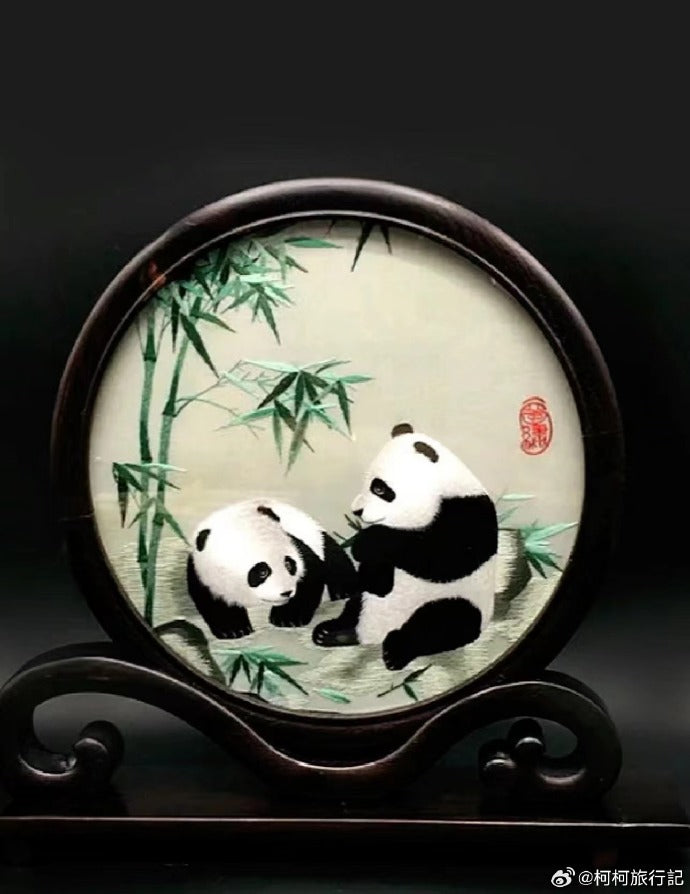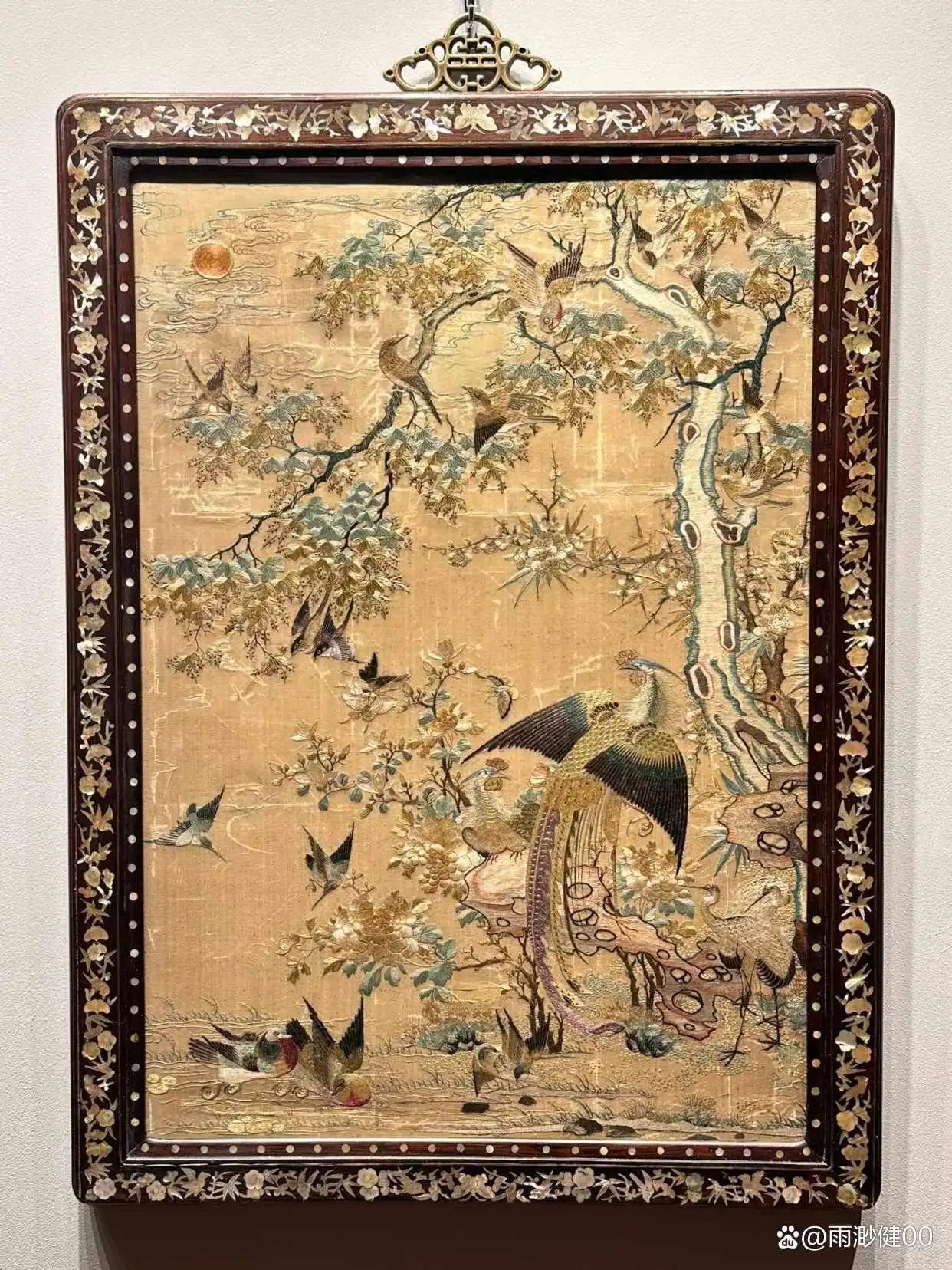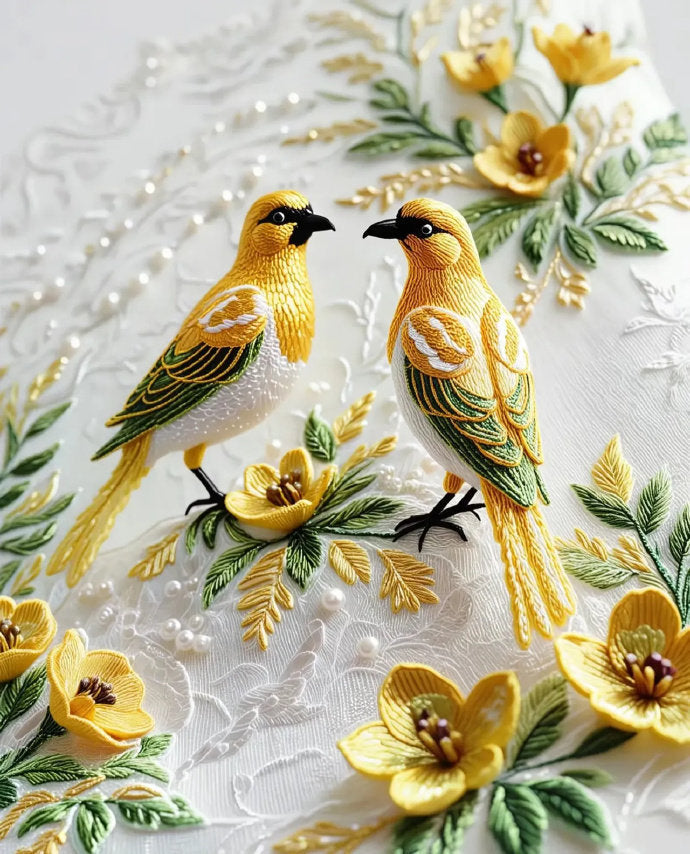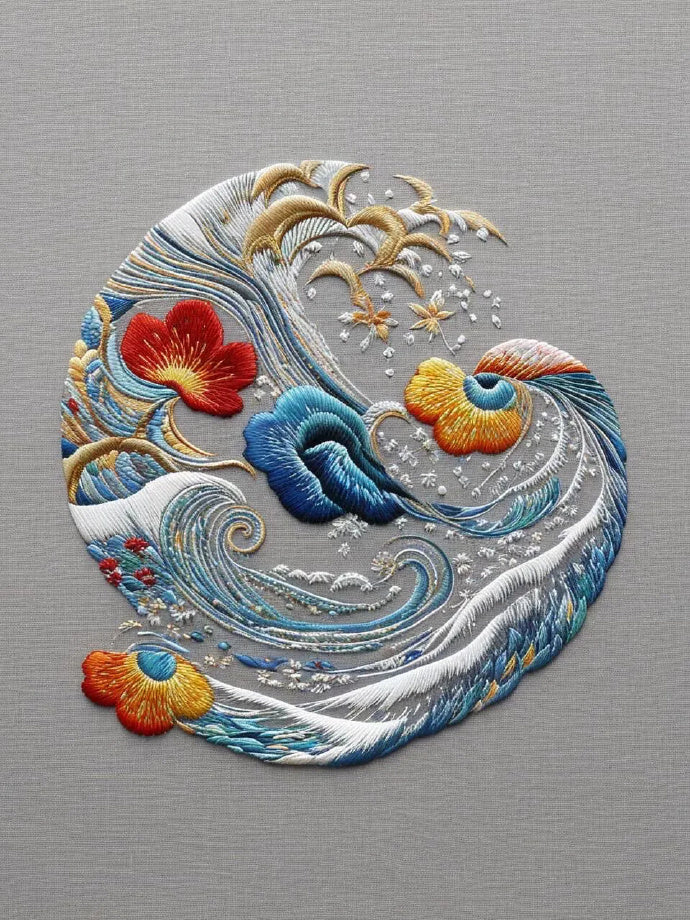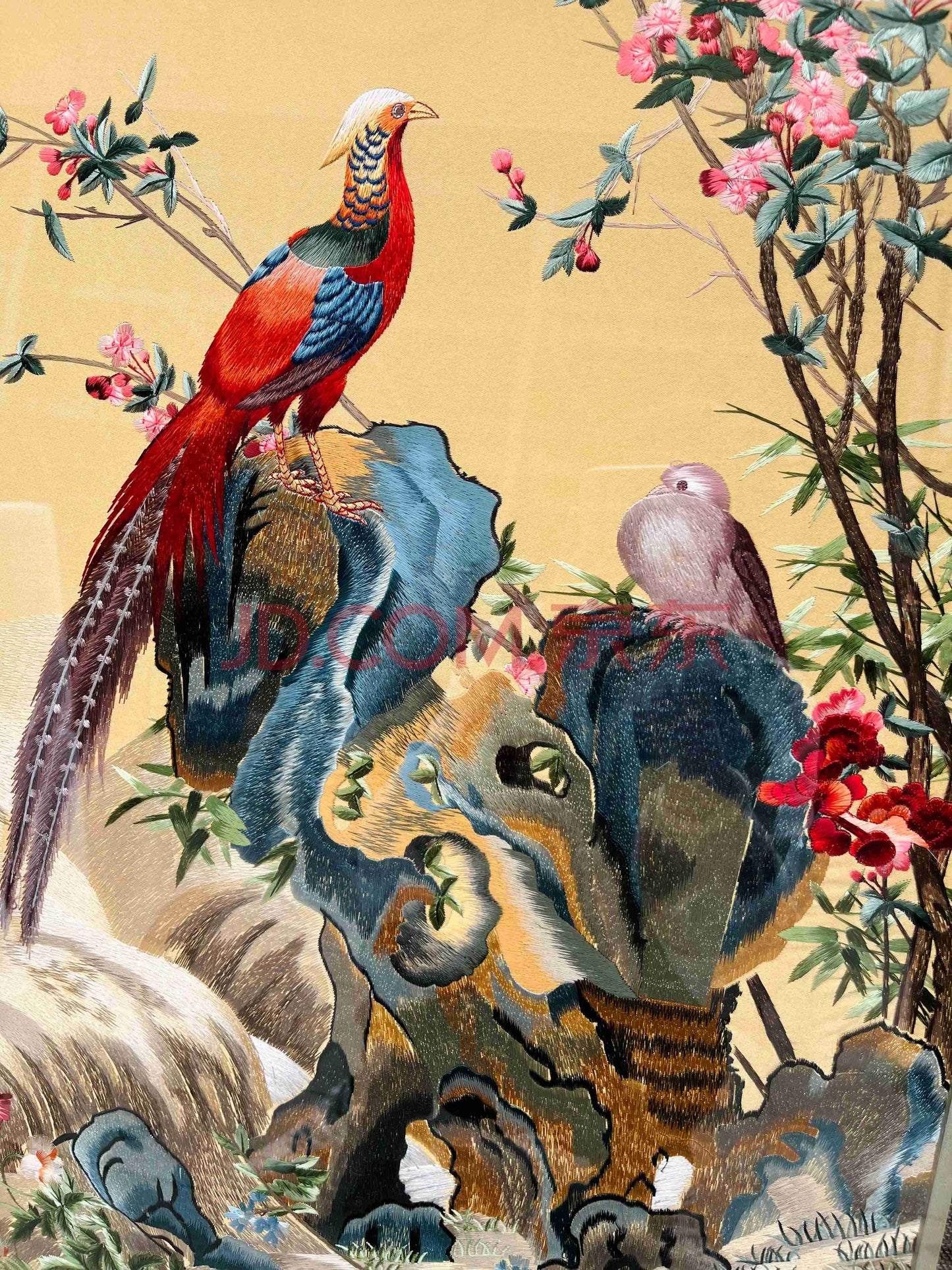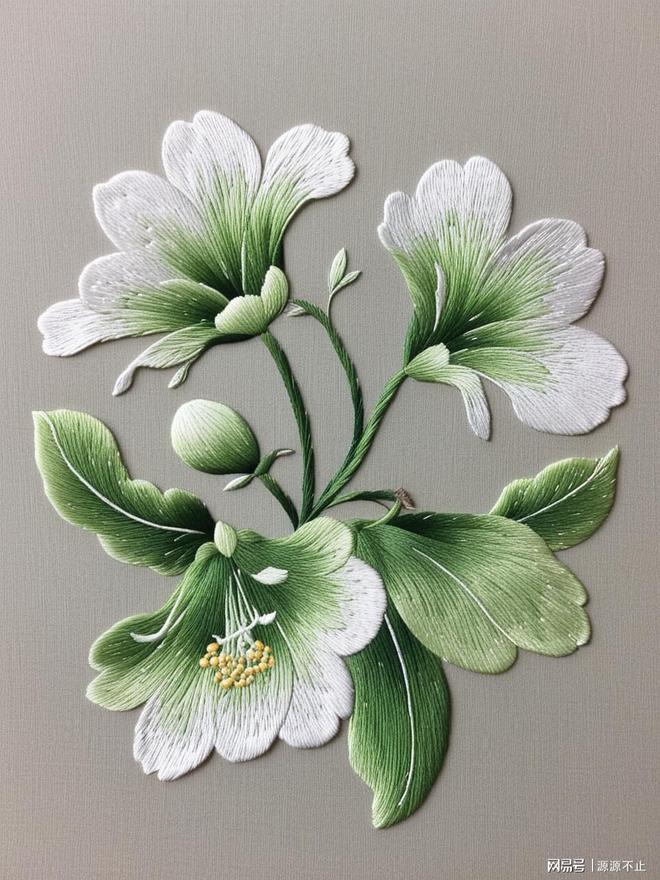东方道器
Chinese Intangible Cultural Heritage: Embroidery/中国非物质文化遗产:刺绣
Chinese Intangible Cultural Heritage: Embroidery/中国非物质文化遗产:刺绣
Couldn't load pickup availability
Chinese Intangible Cultural Heritage: Embroidery/中国非物质文化遗产:刺绣
Silk thread as ink, fabric as paper – this craft chronicles 2,300 years of Chinese aesthetic philosophy.
一、历史脉络 | Historical Evolution
起源 Origins
尧舜时代即有雏形
Traceable to Yao-Shun era (c. 24th century BCE)
西周设专职官员管理
Dedicated officials appointed in Western Zhou (1046-771 BCE)
汉代形成宫廷刺绣体系
Imperial embroidery system formalized in Han Dynasty
鼎盛 Golden Age
宋代分化实用绣与艺术绣
Song Dynasty: Division into utilitarian & artistic embroidery
清代确立四大名绣格局
Qing Dynasty: Emergence of "Four Great Embroideries"
非遗保护 Safeguarding
2006年首批国家级非遗
2006: Included in China's 1st National ICH List
2025年推动申报联合国非遗
2025: Proposed UNESCO ICH nomination
苏绣 Su Embroidery
发源于江苏,以“平、齐、细、密、匀、顺、和、光”八大工艺准则著称。其标志性乱针绣技法可创造出堪比油画的光影层次,2006年被列入首批国家级非物质文化遗产。
Originating in Jiangsu, it follows the "Eight Principles": Flatness, Evenness, Fineness, Density, Uniformity, Smoothness, Harmony, and Luminosity. Signature irregular stitching creates oil-painting-like light effects, recognized in China's First National ICH List (2006).
湘绣 Xiang Embroidery
来自湖南,独创“掺针”技法使色彩过渡如毛笔渲染,代表作《狮虎》系列因毛发立体效果被誉为“魔鬼艺术”,现存72种传统针法谱系。
Hunan innovation with blended stitching achieves brushstroke-like gradients. Its Lion-Tiger Series, famed for 3D fur textures, is hailed as "Devil's Art", preserving 72 stitch techniques.
蜀绣 Shu Embroidery
完整保存着12大类122种针法档案,“鲤鱼牡丹”主题通过“晕针”技法实现水纹动态视觉,明代即被列为皇室贡品。
Documented 122 stitch types across 12 categories. Gradient stitching animates water ripples in "Koi & Peonies" motifs, designated imperial tribute since Ming Dynasty.
粤绣 Yue Embroidery
尤以潮州金线垫高绣闻名,工匠运用棉絮打底再缠绕金丝,使龙凤纹样产生浮雕触感,清代广泛用于出口欧洲宫廷礼服。
Notable for Chaozhou gold-wire relief: cotton-padded foundations wrapped with gold threads sculpt dragon-phoenix motifs. Extensively exported on Qing-era court gowns to Europe.
活态传承现状 | Living Heritage Status
现存掌握完整传统针法的传承人仅217位,主要分布于苏州镇湖(苏绣)、长沙沙坪(湘绣)、成都郫都(蜀绣)。年轻学徒需6-8年掌握基础针法,数字化工程已收录3,842种传统纹样矢量图。
Only 217 bearers master complete traditional techniques, clustered in Zhenhu (Su), Shaping (Xiang), and Pidu (Shu). Novices require 6-8 years for foundational mastery, with 3,842 motif patterns digitally archived.
Share
